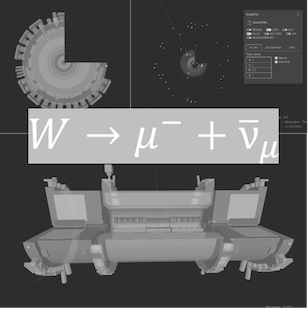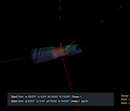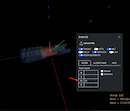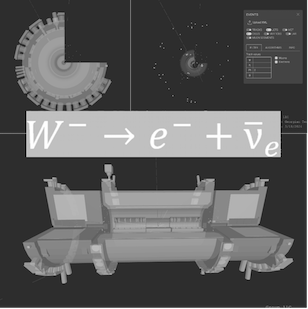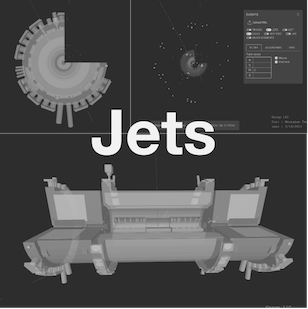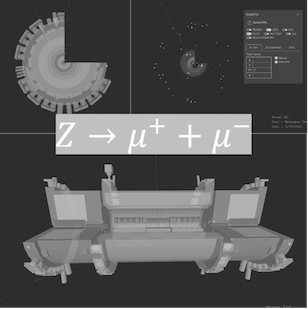Identifying Events with Tracer
Here, you'll learn how the events mentioned before look in Tracer 3D Display.
You will get to use your knowledge about identifying elementary particles.
You'll learn to choose events with a W particle as signal events and to distinguish them from the background events. Again, you'll find explanations about this in the form of a picture gallery.
Διαδικασίες σήματος
-
 In the end view you can see the signature of an electron with high transverse momentum and a neutrino (Missing ET = 27 GeV) going in the opposite direction.
In the end view you can see the signature of an electron with high transverse momentum and a neutrino (Missing ET = 27 GeV) going in the opposite direction.
-
 Η πληροφορία για την τροχιά του λεπτονίου μας υποδεικνύει ότι πράγματι είναι ηλεκτρόνιο (πρόσεξε το αρνητικό πρόσημο).
Η πληροφορία για την τροχιά του λεπτονίου μας υποδεικνύει ότι πράγματι είναι ηλεκτρόνιο (πρόσεξε το αρνητικό πρόσημο).
Διαδικασίες υποβάθρου
-
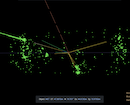 Το γεγονός αυτό δεν αποτελεί σήμα γιατί φαίνονται πάνω από ένας θύσανος σωματιδίων.
Το γεγονός αυτό δεν αποτελεί σήμα γιατί φαίνονται πάνω από ένας θύσανος σωματιδίων.
-
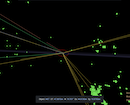 This picture shows an even more enlarged view of the event.
You can see very well how the bundles of particles originate from the interaction vertex (red).
This picture shows an even more enlarged view of the event.
You can see very well how the bundles of particles originate from the interaction vertex (red).
-
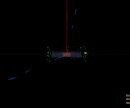 Εδώ φαίνεται η διάσπαση ενός σωματιδίου Z, που είναι ο ηλεκτρικά ουδέτερος φορέας της ασθενούς αλληλεπίδρασης. Το Z διασπάται άμεσα σε μιόνιο και αντιμιόνιο.
Εδώ φαίνεται η διάσπαση ενός σωματιδίου Z, που είναι ο ηλεκτρικά ουδέτερος φορέας της ασθενούς αλληλεπίδρασης. Το Z διασπάται άμεσα σε μιόνιο και αντιμιόνιο.
-
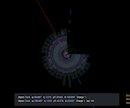 As you can see from this view into the direction of the proton beam muon and anti-muon going back to back.
Both particles might arise from one particle that decayed after its creation.
Cross-checks are always better in order to proof the assumption that a Z particle was produced.
Both muons have distinct electric charges.
As you can see from this view into the direction of the proton beam muon and anti-muon going back to back.
Both particles might arise from one particle that decayed after its creation.
Cross-checks are always better in order to proof the assumption that a Z particle was produced.
Both muons have distinct electric charges.
-
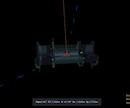 Furthermore there is no missing transverse momentum at all, meaning: A neutrino was probably not produced.
Furthermore there is no missing transverse momentum at all, meaning: A neutrino was probably not produced.
